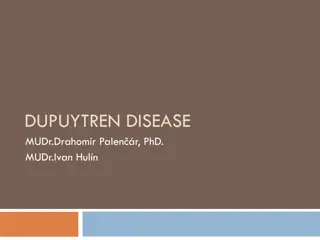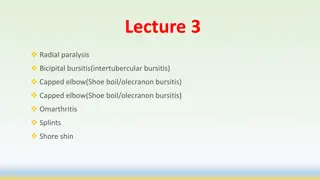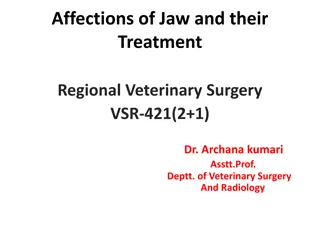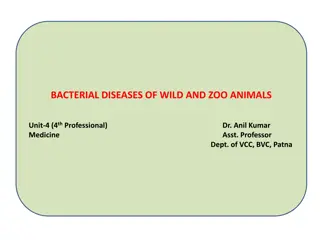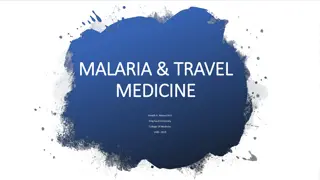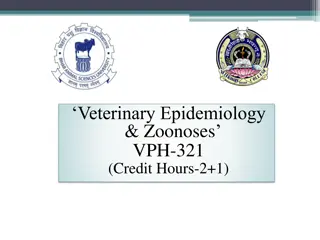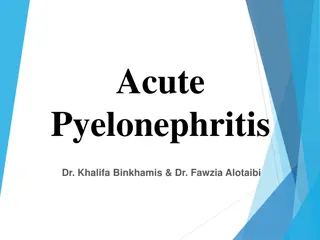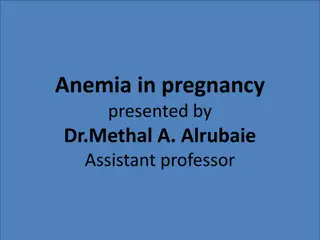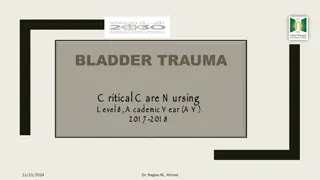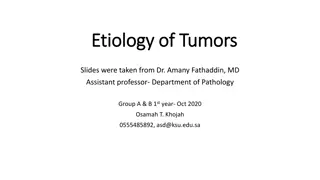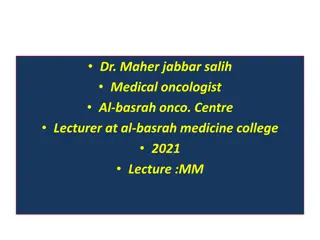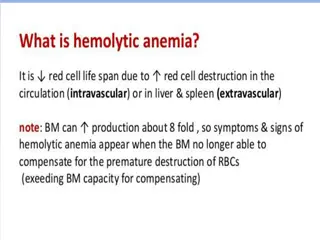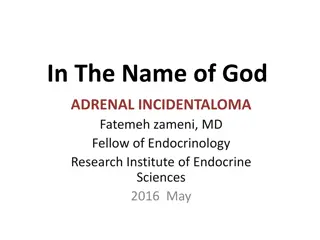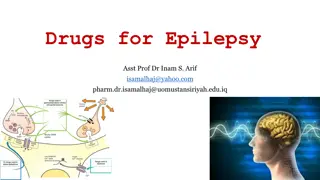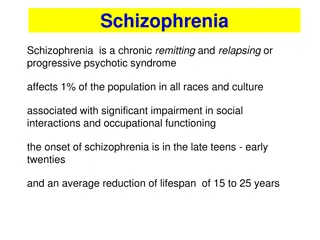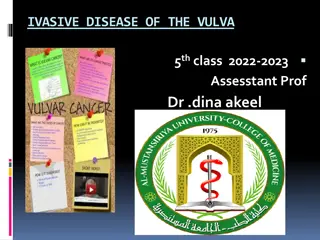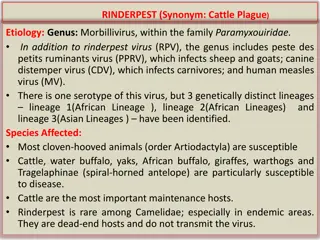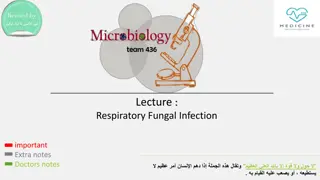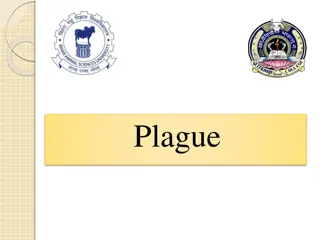Pathology Acute kidney injury
Guidelines of renal biopsy, types of acute kidney injury, clinical manifestations, and pathological findings in this comprehensive lecture. Explore the normal anatomy and histology of the kidney, terminology, etiology, pathophysiology, and more.
12 views • 17 slides
Nursing Care for Ventilator-Associated Pneumonia (VAP)
Ventilator-Associated Pneumonia (VAP) is defined as lung parenchyma inflammation occurring 48 hours or more after endotracheal intubation and mechanical ventilation initiation. It is a common nosocomial infection in ICU patients, with significant morbidity and mortality rates. Etiology of VAP involv
6 views • 24 slides
DUPUYTREN DISEASE
Dupuytren's disease is characterized by fibrotic nodules and bands in the palmar aponeurosis, leading to flexion deformities in the fingers. The etiology is unclear, with higher incidence in Europe. Clinical presentation varies, with treatment options including collagenase injections, needle aponeur
9 views • 11 slides
Overview of Genitourinary Tract Infections and STIs by Prof. Dr. Mete Kılcıler
Genitourinary Tract Infections and Sexually Transmitted Infections (STIs) are common conditions affecting both men and women. This article, presented by Prof. Dr. Mete Kılcıler from the Department of Urology at Bahçeşehir University School of Medicine, delves into the various aspects of UTIs, in
5 views • 47 slides
Common Elbow and Shoulder Joint Conditions in Veterinary Medicine
Learn about radial paralysis, bicipital bursitis, capped elbow, and omarthritis in veterinary medicine. Understand the etiology, symptoms, and treatment options for these conditions, including corticosteroid injections and surgical debridement. Recognize the signs of omarthritis and how it affects j
2 views • 15 slides
Veterinary Management of Jaw Affections and Treatments
Affections of the jaw in animals can range from congenital conditions to inflammatory diseases like gnathitis and lymphadenitis. Paralysis of the lower jaw, gnathitis from bit injuries, and lymphadenitis are discussed, along with their etiology, clinical signs, and treatment options such as general
2 views • 20 slides
Principles of History Taking in Clinical Assessment
History taking is a crucial process in patient assessment, aiding in determining the etiology of medical issues. Obtaining an accurate history through proper questioning, active listening, and maintaining a professional appearance is vital for making accurate diagnoses. The history should follow a s
7 views • 35 slides
Bacterial Diseases Impacting Wild and Zoo Animals: An Overview
Learn about anthrax, tuberculosis, and salmonellosis, three significant bacterial diseases affecting wild and zoo animals. Understand their etiology, hosts, transmission, diagnosis, prevention, and treatment to safeguard animal populations effectively.
4 views • 11 slides
Malaria & Travel: Epidemiology, Etiology, and Prevention
Exploring the epidemiology and etiology of malaria with a focus on travel-related risks. Educational objectives include gaining knowledge on malaria transmission, prevention strategies, and the importance of seeking medical advice before traveling to endemic areas.
4 views • 62 slides
Rabies: Epidemiology, Etiology, and Control Measures
Rabies is an acute fatal disease affecting humans and warm-blooded animals worldwide. It is characterized by abnormal behavior, nervous disturbances, and ultimately death due to respiratory paralysis. Rabies claims approximately 55,000 human lives annually, with efforts at control showing marginal s
6 views • 22 slides
CSF Rhinorrhea and Its Etiology
Cerebrospinal fluid (CSF) rhinorrhea is caused by an osseous defect at the skull base, leading to a leak due to disruption of the dura mater and arachnoid. Trauma and iatrogenic factors are common causes, with non-traumatic cases often linked to high-pressure leaks or tumor growth. Diagnosis involve
4 views • 8 slides
Shock: Etiology, Pathophysiology, Diagnosis, and Management Priorities
Shock, a condition where blood circulation fails to deliver sufficient oxygen, is a common cause of death in surgical patients. Recognizing shock early is crucial to prevent irreversible tissue damage and organ failure. It is vital to understand the various aspects such as etiology, pathophysiology,
6 views • 55 slides
Acute Pyelonephritis: Risk Factors, Etiology, and Management
Acute pyelonephritis is a bacterial infection of the kidney associated with serious complications. This article discusses the definition, risk factors, etiology, and pathogenesis of the condition. It also covers the clinical presentation, diagnosis, management, and prevention strategies for acute py
1 views • 18 slides
Unveiling the Etiology of Aging in Biological Systems
The etiology of aging in both biological and inanimate systems explores the concept that aging may not be driven by genetic programming but rather result from stochastic processes. The loss of molecular structure is a key feature of age-related changes. The Second Law of Thermodynamics is suggested
2 views • 38 slides
Insights into the Plague: Epidemiology, Etiology, and Outbreaks
The Plague, caused by Yersinia pestis, has a chilling history spanning pandemics like the Justinian Plague and the Black Death. Understanding its etiology, family, and pathogenicity is crucial. This deadly disease has had notable outbreaks in India, emphasizing the importance of recognizing its host
4 views • 24 slides
Gastroschisis: Clinical Features, Epidemiology, and Etiology
Gastroschisis is a birth defect involving herniation of intestines outside the abdomen. This presentation covers clinical features, epidemiological aspects like prevalence rates and risk factors, along with insights into its etiology. Learn to differentiate gastroschisis from omphalocele, recognize
3 views • 14 slides
Anemia in Pregnancy: Types, Etiology, and Management
Dr. Methal A. Alrubaie, an assistant professor, presents a detailed overview of anemia in pregnancy. The content covers the classification of anemia types, their etiology, clinical presentation, effects on both mother and fetus, investigation methods, and treatment approaches. Various types of anemi
2 views • 19 slides
Bladder Trauma: Etiology, Pathophysiology, and Management
Bladder trauma commonly occurs due to pelvic trauma or surgical interventions, leading to injuries like contusion, intraperitoneal rupture, and extraperitoneal rupture. Dr. Nagwa M. Ahmed presents key elements of bladder trauma, including its etiology, pathophysiology, clinical presentation, diagnos
3 views • 16 slides
Etiology of Tumors and Cancer Incidence
The etiology of tumors involves factors like age, race, genetics, and the environment. Cancer incidence varies geographically due to genetic predisposition and environmental influences. Learn about precancerous conditions, carcinogenesis concepts, and the impact of environmental factors on cancer ra
1 views • 31 slides
Etiology of Tumors and Cancer Incidence
Etiology of tumors covers the genetic predisposition, precancerous conditions, and carcinogenesis concepts. Understand cancer incidence variation with age, race, and environmental factors like geographic disparities. Environmental factors such as smoking and alcohol are key influences. The impact of
4 views • 25 slides
Overview of Multiple Myeloma Pathogenesis and Etiology
This overview provides insights into the pathogenesis of multiple myeloma, a malignancy of plasma cells, discussing the abnormal production of monoclonal proteins, genetic and environmental factors contributing to the etiology, as well as the pathological consequences such as bone lesions, cytopenia
1 views • 24 slides
Peptic Ulcer Disease
A breakdown of peptic ulcer disease including its definition, types (gastric & duodenal), epidemiology, etiology, clinical presentation, and differential diagnosis. Learn about the incidence, symptoms, and contributing factors of duodenal and gastric ulcers. Understand the key differences between du
7 views • 20 slides
Hemolytic Anemia: Definition, Epidemiology, Etiology, and Clinical Features
Hemolytic anemia is a condition characterized by the destruction of red blood cells, leading to various symptoms such as fatigue, jaundice, and splenomegaly. The etiology ranges from congenital causes like hereditary spherocytosis to acquired causes like autoimmune hemolytic anemia. Diagnosis involv
3 views • 31 slides
primary thyroid lymphoma
Primary thyroid lymphoma is a rare form of cancer that primarily affects the thyroid gland. This type of lymphoma is typically of B-cell lineage and is often associated with preexisting chronic autoimmune thyroiditis, such as Hashimoto's thyroiditis. The etiology of primary thyroid lymphoma is not e
2 views • 18 slides
Adrenal Incidentaloma: Etiology, Assessment, and Case Confirmation
Adrenal incidentaloma refers to the incidental detection of adrenal lesions unrelated to adrenal disease. Explore the etiology, diagnostic assessment, and case confirmation procedures for this condition, including imaging studies, hormonal evaluation, and subtype classification methodologies. Learn
7 views • 46 slides
Fungal Infections of Central Nervous System: Clinical Features and Etiology
Fungal infections of the central nervous system present diagnostic challenges and are considered medical emergencies. Learn about the main fungi causing CNS infections, clinical syndromes like meningitis and brain abscess, risk factors, and how fungi reach the CNS. Etiology includes a variety of fun
2 views • 17 slides
Drugs for Epilepsy
Epilepsy is the third most common neurologic disorder, characterized by different seizure types originating from various mechanisms. Seizures can include loss of consciousness, abnormal movements, and distorted perceptions. Learn about the etiology of seizures and classification based on origin, eti
0 views • 36 slides
Dental Caries Etiology and Classification
Dental caries is a microbiological disease affecting the hard structure of teeth, leading to demineralization and destruction. Learn about etiology, local factors, clinical classification, and zones of caries in enamel and dentin.
10 views • 18 slides
Approach to Patient with Headache Etiology: Primary Causes
Headache is a common neurological disorder with significant personal and societal burdens. This content delves into the various types of headaches, approaches to patient evaluation, red flags for further investigations, and roles of primary healthcare physicians in management. Learn about migraine,
0 views • 89 slides
Schizophrenia: Symptoms, Diagnosis, and Etiology
Schizophrenia is a chronic psychotic syndrome affecting 1% of the population, with onset in late teens to early twenties. It includes positive symptoms like hallucinations and delusions, negative symptoms such as apathy, and cognitive impairments. The DSM-V outlines criteria for diagnosis, requiring
1 views • 34 slides
Abomasal Displacement and Volvulus - Etiology, Prevalence, Clinical Signs
Abomasal displacement and volvulus are multifactorial syndromes affecting dairy cattle, characterized by decreased motility leading to gas accumulation and displacement. Left-displaced abomasum is more common, presenting with reduced appetite, milk production, and possible ketosis. Diagnosis include
1 views • 16 slides
Invasive Disease of the Vulva: Epidemiology & Clinical Features
Vulval cancer, though uncommon, is being diagnosed in younger women too. Squamous cell carcinomas and melanomas are common. The etiology involves HPV and lichen sclerosis. Clinical features include itching, visible abnormalities, and multicentric lesions. Spread can involve local invasion and lympha
1 views • 33 slides
Rinderpest: Etiology, Transmission, and Clinical Signs
Rinderpest, a viral disease affecting cloven-hooved animals, is caused by the genus Morbillivirus. Learn about its etiology, transmission, clinical signs, and eradication efforts.
1 views • 14 slides
Vascular Injuries: Etiology, Pathophysiology, and Clinical Evaluation
Explore the etiology, pathophysiology, and clinical evaluation of vascular injuries, including causes such as blunt trauma and penetrating injuries. Learn about the symptoms and indicators that may signify vascular injury, leading to emergency operative exploration.
1 views • 8 slides
Acute Post-Streptococcal Glomerulonephritis: Etiology, Pathology, and Clinical Manifestations
Learn about the etiology, pathology, clinical manifestations, prevention, treatment, and prognosis of Acute Post-Streptococcal Glomerulonephritis (APSGN). Recognize the abrupt onset, common symptoms, and potential complications associated with this condition. Early detection and management are cruci
0 views • 25 slides
Pleural Effusion: Etiology, Diagnosis, and Management
Explore the anatomy, etiology, pathophysiology, and clinical features of pleural effusion along with methods to differentiate between exudates and transudates. Learn about investigations and treatment options for this common medical condition.
0 views • 49 slides
Introduction to Criminology: Key Concepts and Theoretical Foundations
Explore the field of criminology, the study of crime and deviant behavior, through concepts like victimology, criminal etiology, and more. Discover the interdisciplinary nature of criminology and its connections to various fields such as psychology, sociology, and law. Delve into the history of crim
14 views • 12 slides
Classification and Etiology of Mental Disorders with Prof. Dr. Elham Fayad
Explore the classification and etiology of mental disorders presented by Prof. Dr. Elham Fayad. Learn to classify common mental disorders and discuss their causes, including personality disorders, organic mental disorders, substance-related disorders, schizophrenia, and more.
1 views • 37 slides
Respiratory Fungal Infections: Etiology, Diagnosis, and Treatment
Explore the complexities of respiratory fungal infections, including the etiology, common fungal species, risk factors, and classification of diseases such as aspergillosis. Learn about the challenges in diagnosing and treating these infections, which are less common but present significant difficul
0 views • 18 slides
Plague: History, Etiology, and Outbreaks - A Comprehensive Overview
Explore the history, etiology, and notable outbreaks of the Plague, also known as the Black Death. Learn about the epidemiology of this infectious disease caused by Yersinia pestis, its impact on past pandemics, and outbreaks in India. Discover the key features of the bacterium and significant disco
0 views • 26 slides


